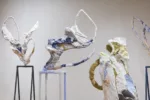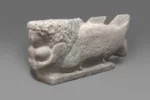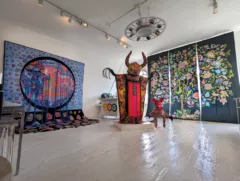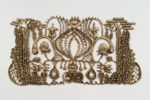[Andrea hits the road to visit Donald Judd’s Marfa, Texas art installations, and lauds the way the unconventional site highlights the featured artworks. — the Artblog editors]
To those of us in the art world, “Marfa” means Donald Judd’s installations at the Chinati Foundation. The site opened to the public in 1986 and I’ve wanted to go since then, but Marfa is three and a half hours’ drive from the airport in El Paso, and even further from San Antonio, and I don’t like highway driving on my own. My good friend Hilary Jay, director of the Philadelphia Center for Architecture, agreed to join me and share the drive.
We had six days’ adventure in West Texas, which is as unfamiliar as a foreign country. The city is in the Chihuahuan Desert, 4,685 feet above sea level, in a landscape marked by dust, tumbleweeds, and small, randomly-distributed vegetation. Despite visiting the botanical garden at the Chihuahuan Desert Nature Center, a most worthwhile trip, I didn’t find out what those forlorn plants were.
A luminous yet restrained renovation
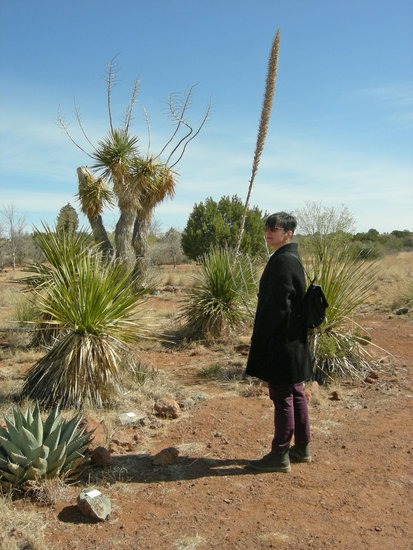
The Chinati Foundation is located on part of the former Army Fort D.A. Russell, and Judd believed strongly in not sacrificing any of the untouched land to new development. He adapted the structures he found in varying states of decay, modifying their windows, doors, and occasionally their interiors, and substituted barrel roofs for those flat roofs that leaked. His modifications were restrained, and he was particularly sensitive to the impact of natural light. All of the exhibition spaces have natural light, which artists always prefer and museums rarely provide, because of conservation concerns. The resulting transformed, vernacular buildings should ensure that Judd’s name appears on any list of distinguished, late 20th-century architects.
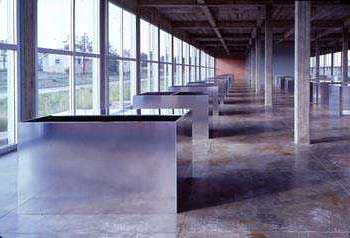
Judd’s idea was to site groups of his own work and those by a few colleagues he admired, without any of the constraints that museums impose. These include displaying artworks in places other than their original, intended locations; the grouping of single works by a large number of artists; and viewing conditions that are often crowded and visually compromised.
Featured artists
In addition to Judd’s own work, the permanent displays at the foundation include: substantial work by John Chamberlin, occupying a former warehouse in central Marfa, rather than the primary site; Dan Flavin, whose untitled work, commissioned for the site, consists of light installations in six buildings; one of Ilya Kabakov’s Soviet-era fictions; a large group of poems by Carl Andre, in cases designed by the artist; a selection of paintings done over four decades by John Wesley; and a handful of work by others. Spaces are also used for temporary exhibitions, and the ongoing presence of visiting artists keeps the site engaged with current art.
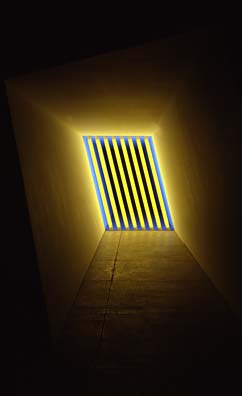
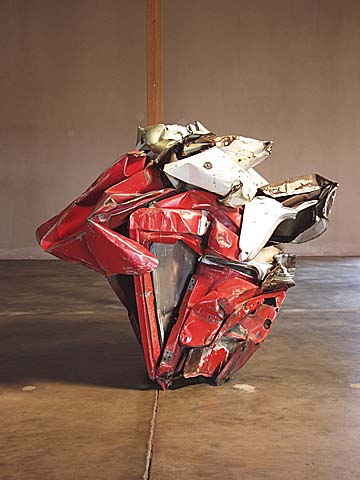
I had seen permanent installations of Judd’s work before, but was still unprepared for its impact in this most carefully calibrated presentation. Judd’s work, like that of Mies vand der Rohe, suffers in photographic reproduction, which gives undue emphasis to what both men omitted: namely, small-scale decoration and contrasting variety of materials. Photographs are good for facades, but not interiors, so they never capture the most powerful aspect of both artist and architect, which is their manipulation of scale and proportion. Judd was a master of three-dimensional space, and the chance to spend time with his work–particularly the two long sheds filled with 100 mill aluminum works–provided a meditation on space, light, and the relationship between the physical world and our visual perception of it. It was a deeply emotional experience.
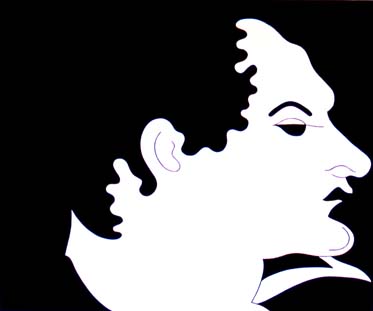
The mill aluminum works, evenly spaced in three rows in each building, are all variations on the same box-like structure of 41″ x 51″ x 72″. Judd worked with omitting part of the enclosing shell and variously dividing the interior space, sometimes placing one or two panels parallel to the shell either vertically or horizontally, or large, diagonal planes that divide the interior space. Unlike some of Judd’s earlier work exploring similar geometry, such as an untitled piece in highly polished brass from 1969, at MoMA, the finish of these pieces is fairly rough. The aluminum bears marks of its production, and sometimes the sheets that form the shell are attached in a manner that leaves visual evidence of the construction at close range.
All the surface imperfections disappear in the extraordinary light of the sheds, where Judd replaced the long walls on either side with glass. In the changing natural light of the high Texas desert, as one walks through the space, the aluminum assumes a variety of colors and effects and sometimes appears both reflective and translucent, as if transformed into glass. Knowing that everything in sight is made of a single material only makes these effects seem more magical.
Judd’s lasting legacy
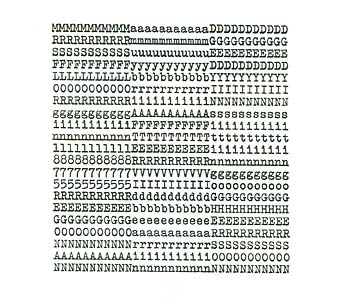
Judd died, after a very brief illness, in 1994. The completion of his plans and establishment of a functioning, fiscally viable public institution with a broad variety of programming that attracts an international audience was carried out by the art historian Marianne Stockebrand–Judd’s partner and the foundation’s first director. She organized and wrote most of the text for the stunning book, Chinati, Marfa, Texas; the vision of Donald Judd. It is a thorough, detailed, and beautifully laid-out account of the history and fulfillment of Judd’s project, extensively illustrated with plans, and images commissioned for the volume. The book is ideal reading prior to visiting Marfa, and the best possible substitute if a trip is not possible.
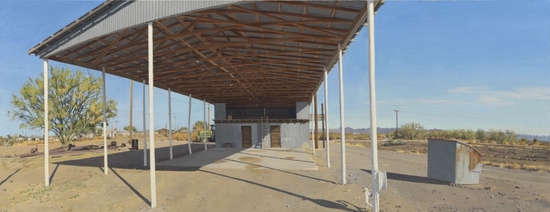
Barn, P.M.” (2008), oil on canvas, 24″ x 62″, © Rackstraw Downes
The landscape around Marfa is barely suggested by any photographs I have seen, but is particularly well captured by the panoramic work that Rackstraw Downes has painted in Marfa and nearby–which, admittedly, I know only in reproduction. Downes visited Marfa in 1998, at Chinati’s invitation, and has spent the winter months in the area during the past decade, working en plein air. We were fortunate to catch the courtly, British-born painter, who was giving a reading from the new anthology of his published writing, Nature and Art are Physical: Writings on Art 1967 – 2008” (Edgewise Press, New York: 2014), courtesy of the Marfa Book Company.
Downes is the rare artist who is also an extraordinarily articulate writer, and he approaches his subjects without fixed ideas. He has painted according to his own vision, which has not been mainstream, and brings particular sensitivity to other artists whose work has been overlooked because it fell beyond neat and conventional art historical accounts. Other artists will surely appreciate his insights, and it gives the rest of us an idea about how an acutely thoughtful painter approaches his own work and that of his colleagues.


